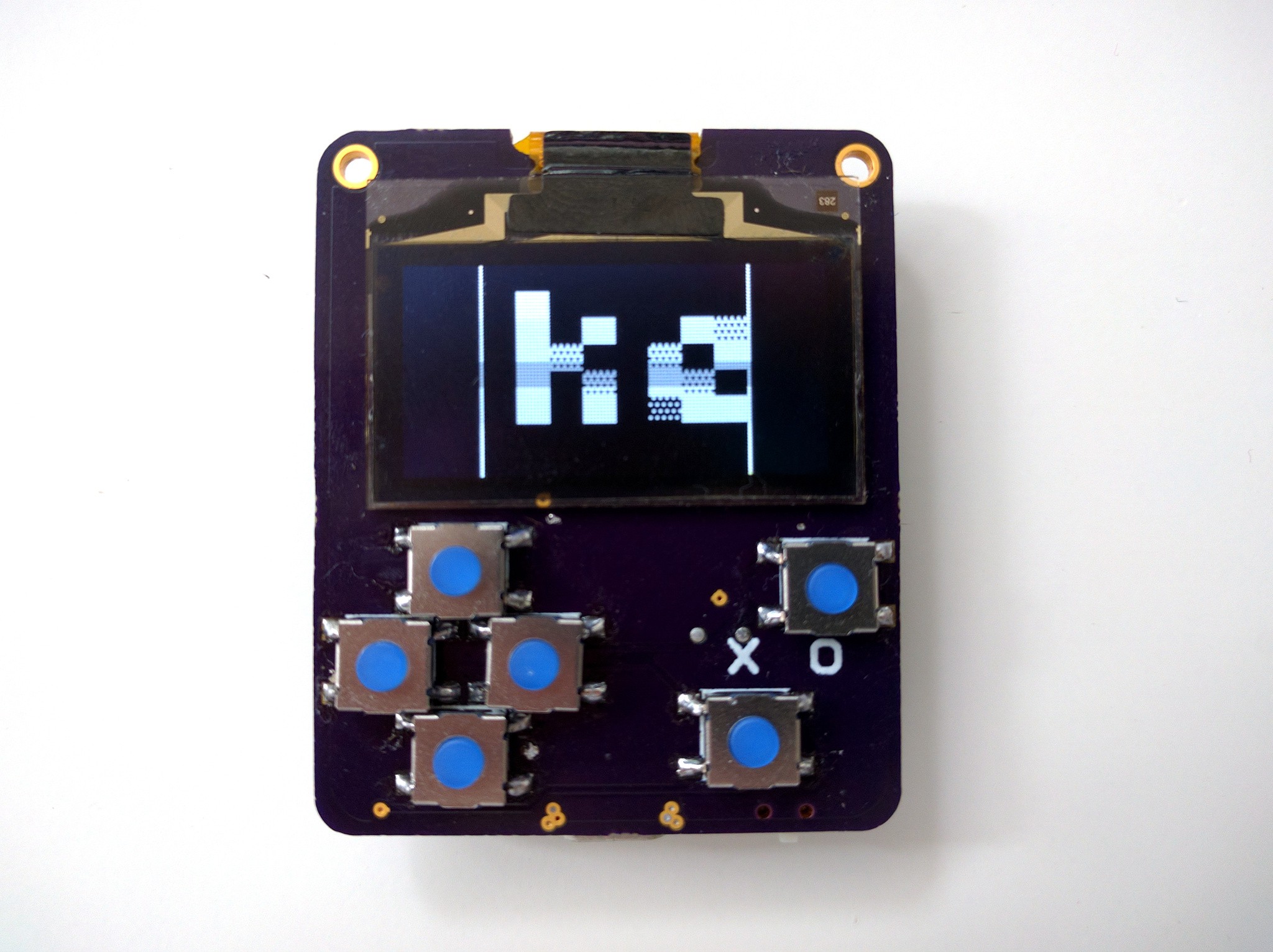So the Pew library is now ported. It's still not as fast as on the other boards, I might need to rewrite it in C after all, but it's a good first step for testing.

The heart of the whole porting effort is the function that draws those dithered pixels. It's surprisingly simple:
_PATTERNS = (
b'\x00\x00\x00\x00\x00\x00\x00\x00\x00\x00',
b'\x44\x11\x44\x11\x44\x11\x44\x11\x44\x11',
b'\xee\xbb\xee\xbb\xee\xbb\xee\xbb\xee\xbb',
b'\xff\xff\xff\xff\xff\xff\xff\xff\xff\xff',
)
def show(pix):
pix_buffer = pix.buffer
display_buffer = _display.buffer
index = 24
for y in range(8):
pix_index = pix.width * y
for x in range(8):
display_buffer[index:index+10] = _PATTERNS[pix_buffer[pix_index]]
pix_index += 1
index += 10
index += 48
_display.show()
Basically we have pre-recorded images of the pixels, that we copy into the buffer at the right places based on the image to be displayed. I also tested doing this on the fly while sending data to the display, and with a per-line buffer, but that didn't make it faster, and resulted in some tearing effects — sending the whole frame all at once to the display has the advantage of it appearing instantly and whole.
I might try keeping track of dirty pixels, and only update those, and maybe even updating the display buffer right away when the drawing operations are happening, though that would require changes in Pew's architecture. Most likely I will probably keep the current logic and just move it to C to make it faster.
 deʃhipu
deʃhipu
Discussions
Become a Hackaday.io Member
Create an account to leave a comment. Already have an account? Log In.